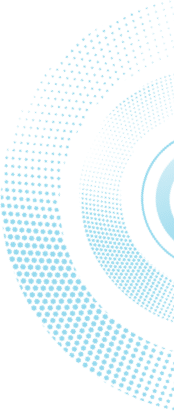
Dr. Rotem Leshem
Research
Neurocriminology:
- The connections between brain mechanisms and socio-psychological and cognitive factors in the context of behaviors at risk (e.g., antisocial or criminal behavior).
- Epigenetics: The effect of psychosocial and geographic environments, particularly in high-crime areas, on stress hormones and gene expression related to aggression and violence.
- Cerebral Asymmetry: Hemispheric specialization and interhemispheric interaction for linguistic and emotional processes in risky behaviors.
Psychocognition and Antisocial Behavior:
- Emotion identification and processing, cognitive functions—including language (metaphor comprehension, vocabulary, reading skills), inhibition, and impulsive decision-making—in relation to emotional and behavioral problems.
- Mindfulness in relation to impulsivity and aggression.
Courses
Undergraduate:
B.A: "Introduction to Psychology; Impulsivity, emotional dysregulation and behavioral problems; Risky decision making among youth at risk; Personality disorders: Psychopathy and pathological narcissism; Impulsivity and mindful attention among offenders
M.A.: "Violence and delinquency: theoretical and clinical aspects; Neurocriminology; Personality disorders and psychopathy; Clinical Research Workshop; Active attention during interrogation
Publications
Chapter in a Book
Glicksohn, J., & Leshem, R. (2011). Reproduction of duration: How should I count the ways? In A. Vatakis, A. Esposito, M. Giagkou, F. Cummins, & G. Papadelis (Eds.), Multidisciplinary aspects of time and time perception: COST TD0904 International Workshop, Athens, Greece, October 7-8, 2010, revised selected papers (pp. 79-91). Berlin: Springer-Verlag.
Glicksohn, J., Naor-Ziv, R., & Leshem, R. (2018). Sensation seeking and risk-taking. In M. M. Martel (Ed.), Developmental Pathways to Disruptive, Impulse-Control, and Conduct Disorders (183-208). New York: Elsevier.
Leshem, R. (2024). Risky behaviors among adolescents: the thinking brain versus the feeling brain. in Y. Idisis, L. Cohen-Rez, F. Sylfan (eds.). Clinical Criminology: Research Theory and Clinic. Bar-Ilan University. (Hebrew).
Publications in Refereed Journal
Glicksohn, J., Leshem, R., & Aharoni, R. (2006). Impulsivity and time estimation: Casting a net to catch a fish. Personality and Individual Differences, 40, 261-271
Glicksohn, J., Naor-Ziv, R., & Leshem, R. (2007). Impulsive decision making: Learning to gamble wisely? Cognition, 105, 195-205.
Leshem, R., & Glicksohn, J. (2007). The construct of impulsivity revisited. Personality and Individual Differences, 43, 681-691.
Leshem, R., & Glicksohn, J. (2012). A critical look at the relationship between impulsivity and decision-making in adolescents: Are they related or separate factors? Developmental Neuropsychology, 37, 712-731.
Leshem, R. (2013). The effects of attention on ear advantages in dichotic-listening to words and affects. Journal of Cognitive Psychology, 25, 932-940.
Leshem, R., Armoni-Sivan, R., & Arzouan, Y. (2015). The effects of sad prosody on hemispheric specialization for words processing. Brain & Cognition, 96, 28-37.
Leshem, R. (2015). Relationships between trait impulsivity and cognitive control: Examining the effect of attention switching on response inhibition and conflict resolution in non- clinical impulsivity. Cognitive Processing, 17(1), 89-103.
Leshem, R. (2016). Using Dual Process Models to Examine Impulsivity throughout Neural Maturation. Developmental Neuropsychology, 41(1-2), 125-143.
Leshem, R. (2016). Brain Development, Impulsivity, Risky Decision Making, and Cognitive Control: Integrating Cognitive and Socioemotional Processes During Adolescence—An Introduction to the Special Issue. Developmental Neuropsychology, 41(1-2), 1-5.
Leshem, R. (2018). Trait Anxiety and Attention: Cognitive Functioning as a Function of Attentional Demands. Current Psychology, 1-13.
Leshem, R., & Weisburd, D. (2019). Epigenetics and Hot Spots of Crime: Rethinking the Relationship between Genetics and Criminal Behavior. Journal of Contemporary Criminal Justice, 35(2), 186-204.
Leshem, R., van Lieshout, P.H.H.M., Ben-David, S., & Ben-David, B.M. (2019). Does emotion matter? The role of alexithymia in violent recidivism: a systematic literature review. Criminal Behaviour and Mental Health, 29, 94-110.
Leshem, R., & Yefet, M. (2019). Does impulsivity converge distinctively with inhibitory control? Disentangling the cold and hot aspects of inhibitory control. Personality and Individual differences, 145, 44-51.
De Fano, A., Leshem R., & Ben-Soussan, T.D. (2019). Creating an internal environment of cognitive and psycho-emotional well-being through external movement-based environment: an overview of Quadrato Motor Training. International Journal of Environmental Research and Public Health, 16(12), 2160. https://doi.org/10.3390/ijerph16122160
Leshem, R. Paoletti, P., Piervincenzi, C., Carducci, F., Mallio, C.A., Errante, Y., Quattrocchi, C.C., & Ben-Soussan, T.D. (2019). Inward versus reward: White matter pathways in extraversion. Personality Neuroscience, 2, 1-9. Cambridge University Press.
Menashe, S., Leshem, R., heruti, V., kasirer, A., Iyair, T., & Mashal, N. (2020). Elucidating the role of selective attention, divergent thinking, language abilities, and executive functions in metaphor generation. Neuropsychologia, 142, 107458.
Leshem, R., A.De Fano, & Ben-Soussan, T.D. (2020). Motor inhibition as a basis for self-control and self-regulation: the case of Quadrato Motor Training. Frontiers Psychology
Leshem, R. (2020). There are more than two sides to antisocial behavior: The Inextricable Link between Hemispheric Specialization and Environment. Symmetry, 12(10), 1671.
Leshem, R., Icht, M., Bentzur, R., & Ben-David, B.M (2020). Processing of emotions in speech in forensic patients with schizophrenia:
Impairments in identification, selective attention, and integration of speech channels
Frontiers in Psychiatry, 11, 1227.
Leshem, R., & King, R. (2021). Trait impulsivity and callous‐unemotional traits as predictors of inhibitory control and risky choices among high‐risk adolescents. International journal of psychology, 56(2), 314-321.
Leshem, R. & Altman C. (2021). Distinct effects of executive functioning, impulsivity and anxiety on global and local 1 reading comprehension. Frontiers in Education, 6, 746978.
Leshem, R., Icht, M., & Ben-David, B.M (2022). Processing of spoken emotions in schizophrenia: Forensic and non-forensic patients differ in emotional identification and integration but not in selective attention, Frontiers in Psychiatry, 13.
Paoletti, P., Leshem, R., Pellegrino, M., D. Ben-Soussan, T. (2022). Tackling the Electro-topography of the Selves through the Sphere Model of Consciousness, Frontiers in Psychology, 1534.
Paoletti, p., Giuseppe, T.Di, Lillo, C., Ben-Soussan, T.D., Bozkurt, A., Tabibnia,G., Kelmendi, K., Warthe, G.W., Leshem, R., Bigo, V., Ireri, A., Mwangi, C., Bhattacharya., N., & Perasso., G.F. (2022). What can we learn from the Covid-19 pandemic? Resilience for the future and neuropsychopedagogical insights, Frontiers in Psychology, 13, 847455.
Leshem, R., Heltai, S. H., & Mashal, N. (2023). Personality traits and environment: The effects of observing visual art on verbal creativity. Progress in Brain Research, 277, 85-108.
Leshem, R. (2024). Internal and External Crime Hot Spots: From Neural to Micro-Geographical Networks. International Annals of Criminology, 1–23. doi:10.1017/cri.2024.3
Leshem, R., & Mashal, N. (2024). What does metaphoric language say about aggression? The relationships between metaphoric language, impulsivity, and aggression. Acta Psychologica, 243, 104173.
Leshem, R., Catz, O., & Nave, A (2024). The relationship between mindfulness and impulsivity: The role of meditation. Mindfulness, 15, 1234-1251.
Last Updated Date : 18/11/2025



